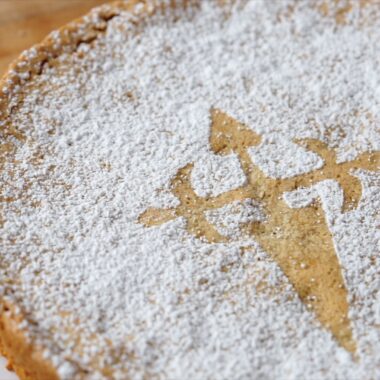Tarta de Santiago it’s a Spanish almond cake originally from Galicia but served in every part of Spain nowadays.
It’s gluten-free and exceptionally easy to make, and you’ll fall in love with it at the first bite.
Ingredients to make tarta de Santiago:
Almond: I use store-bought almond meal.
Eggs: Whole room temperature eggs.
Sugar: Granulated white sugar for the batter and powdered for dusting the cake.
Orange: I use the zest of 2 oranges that add a subtle zing to the cake.
Other flavors: Ground cinnamon and almond extract.
Salt: Salt adds contrast and helps enhance the natural flavor of the cake
How to make tarta de santiago:
The process is pretty much straightforward; we’re going to place five large eggs, always at room temperature, in a stand mixer bowl.
Add 300g of granulated sugar and whip the eggs until fluffy and pale yellow. It will take around 5 minutes.

While the eggs are mixing, we prepare the dry ingredients.
In a medium bowl, combine 300g of almond flour with 1 tsp of cinnamon and a pinch of salt.
The traditional recipe also calls for lemon zest, but I think that oranges pair better with almonds and cinnamon.
Stir with a spatula, then grab the bowl with the egg mixture.
Okay, now we have the wet and dry ingredients; we must gently fold the almond flour into the egg mixture, carefully avoiding deflating the batter.
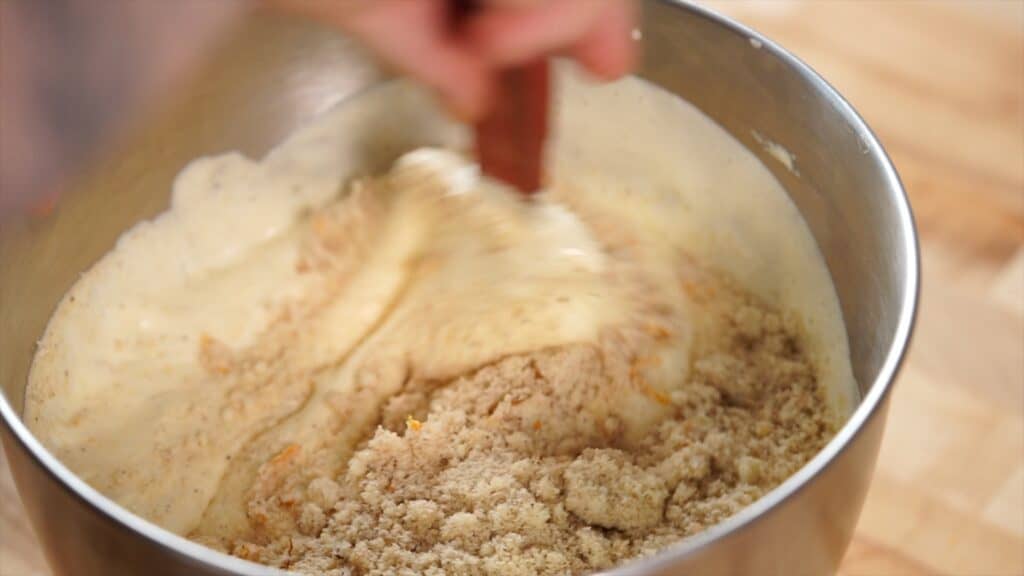
Once all the flour is incorporated, and you have a smooth batter, transfer it into a 10″ springform pan greased with butter and lined with parchment paper.
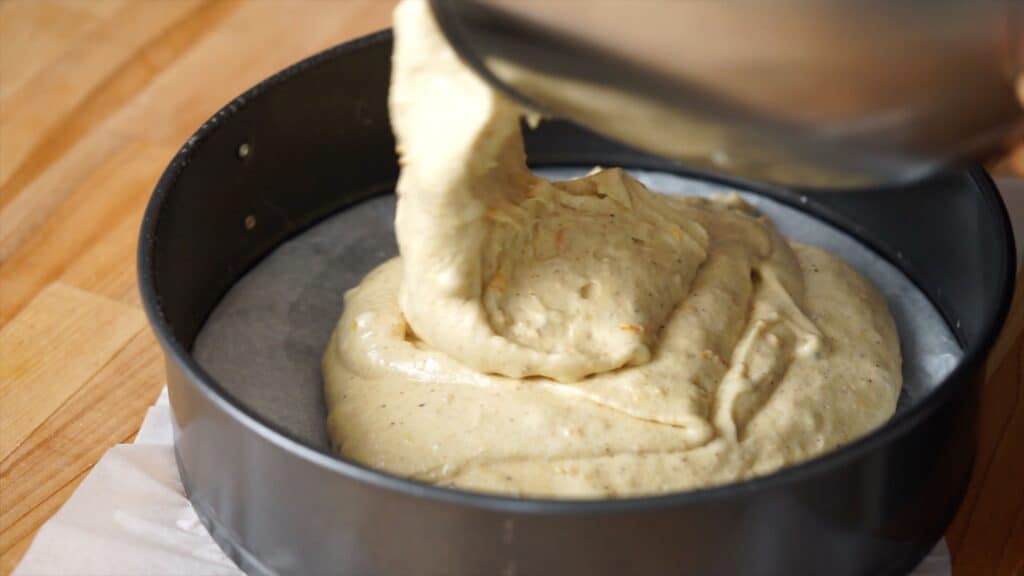
Chef tip:
This cake is really moist, and sometimes the cake sticks to the bottom even if is greased, so I prefer to be safe than sorry I also lined the pan with parchment paper.
Clean the bowl of any streaks of batter using a silicone spatula and bake a 350°F in a preheated oven for 30 to 40 minutes.
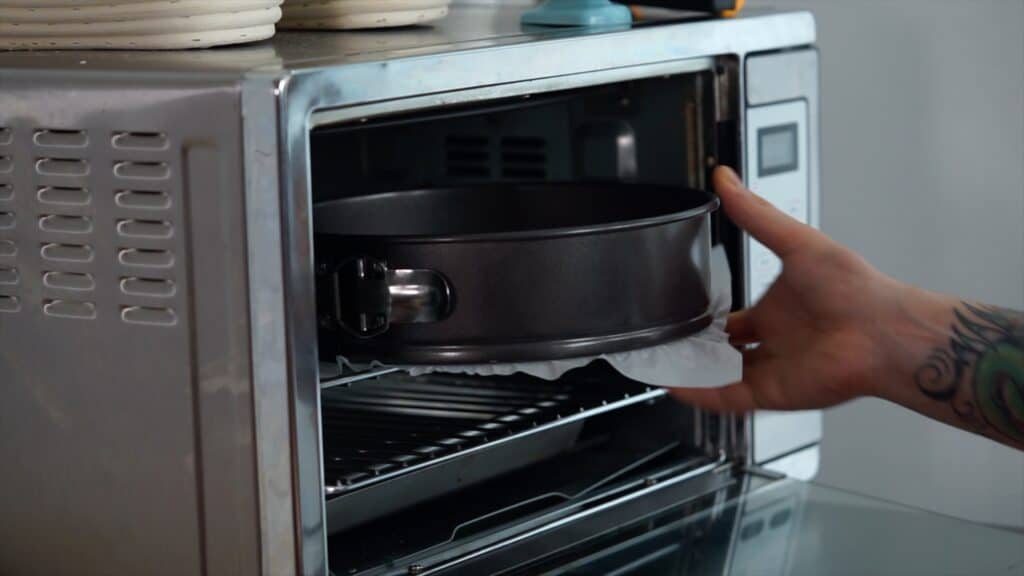
To know exactly when the cake is done, I advise is to use a kitchen thermometer; when the internal temperature reaches 210°F is ready.
Remove the cake from the oven and let it cool for 30 minutes on a wire rack, I know it’s tough, and you want to eat it right away, but as I said, this is very delicate and needs to be set a little.
Now we can start unmolding the cake, remove the ring, then grab the sides of the parchment paper and lift the cake.
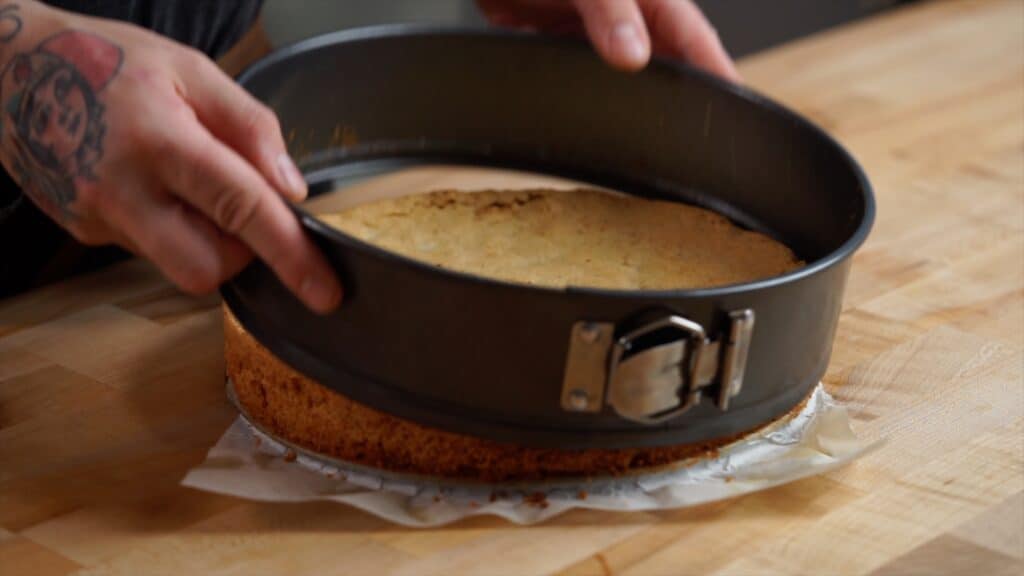
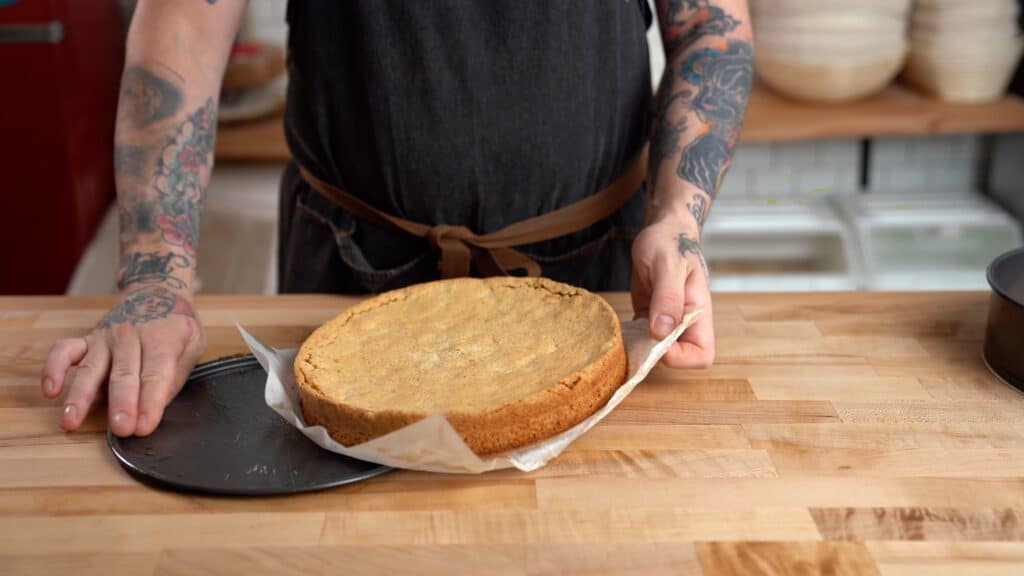
Now grab a large angled spatula and pass it underneath the cake to separate the cake from the paper.

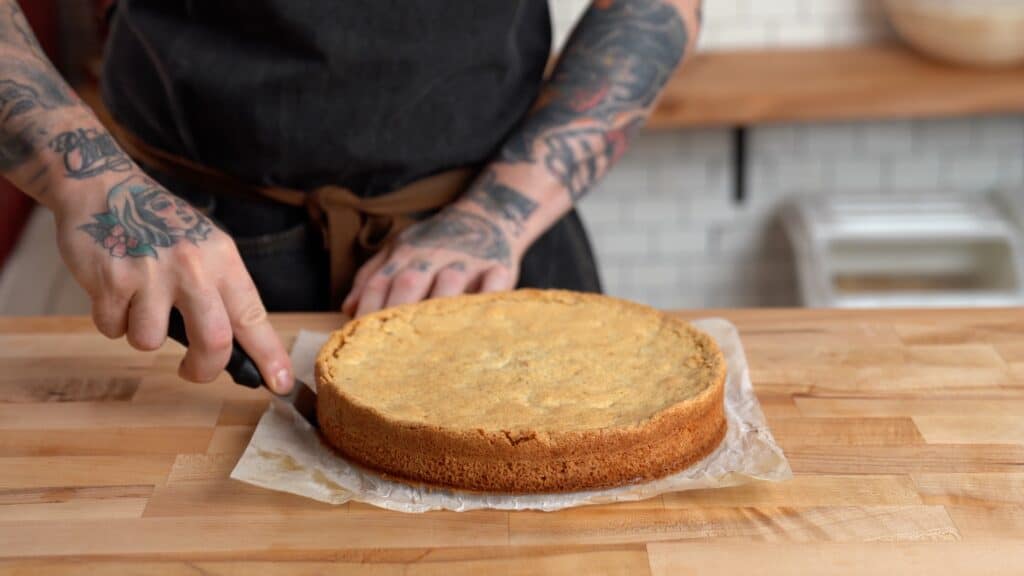
Last we pass a cake board underneath, and voila, ready.
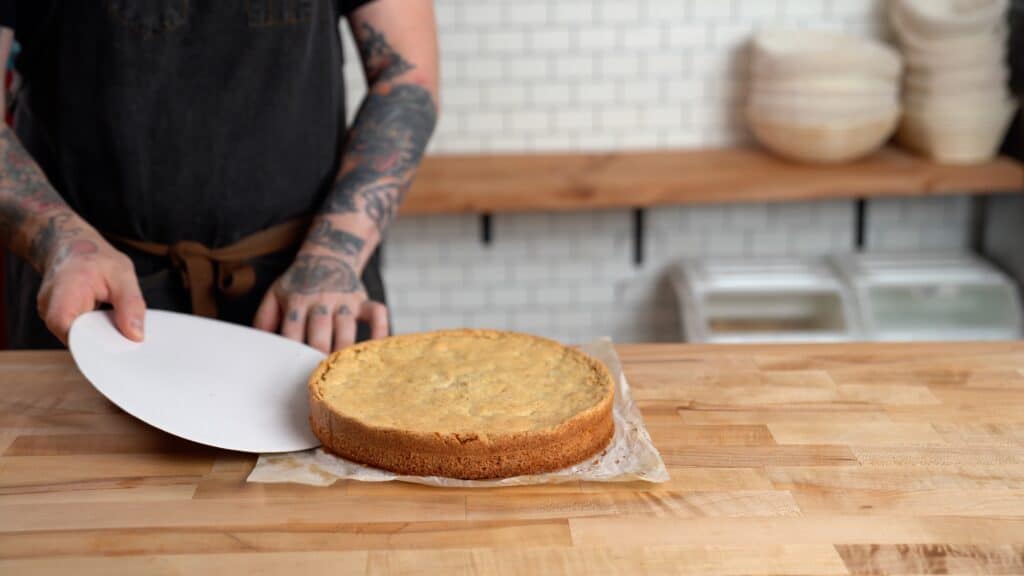
This cake is traditionally finished by dusting icing sugar on top with the stencil of St.James cross in the middle.
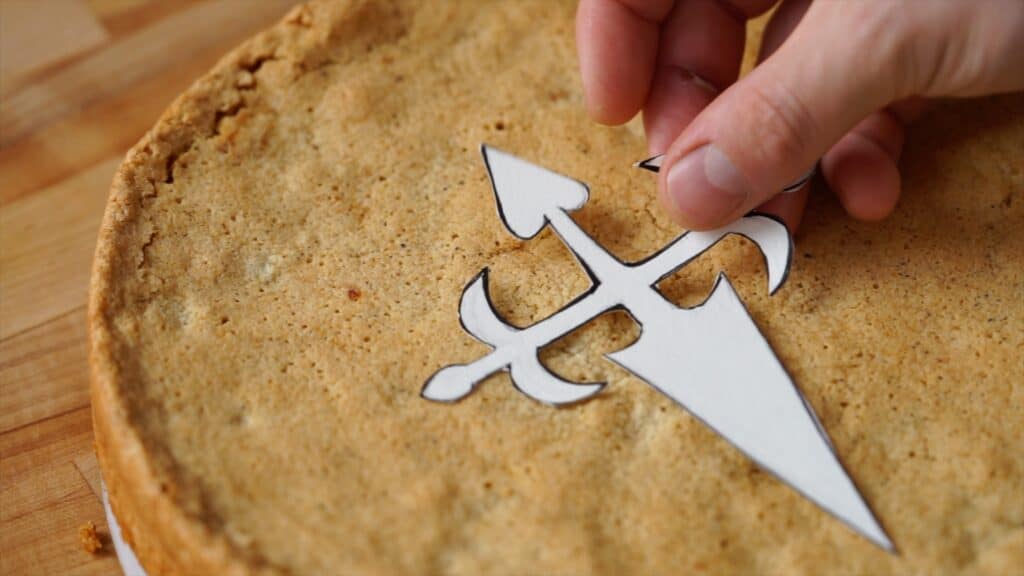
You can download the stencil here: https://www.bakefromscratch.com/crossstencil/
Then when you lift the stencil, you have a wonderful decoration.
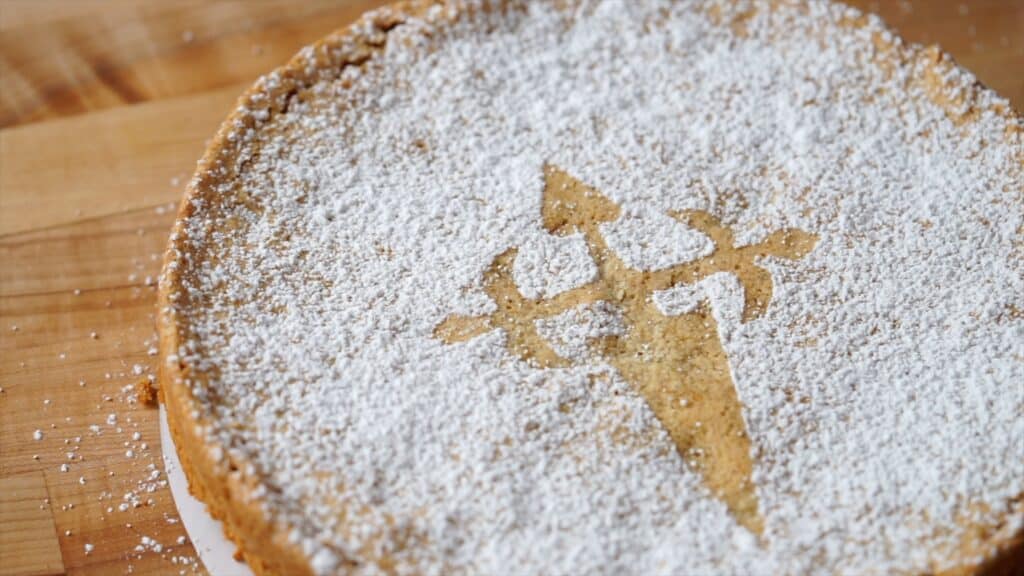
You might also like:
Equipment
- 1 10-inch springform pan
- 1 stand mixer
- 1 medium bowl
- 1 inclined offset spatula, large
- 1 flexible rubbermaid spatula
Ingredients
- 5 large eggs, room temperature
- 300 g granulated sugar
- 300 g almond flour
- 2 tsp almond extract
- 1 tsp ground cinnamon
- 1 orange zest
To finish:
- powdered sugar
Instructions
- The process is pretty much straightforward, we’re gonna place five large eggs, always at room temperature, in a stand mixer bowl.
- Add 300g of granulated sugar and whip the eggs until fluffy and pale yellow. It will take around 5 minutes.
- While the eggs are mixing, we prepare the dry ingredients.
- In a medium bowl, combine 300g of almond flour with 1 tsp of cinnamon and a pinch of salt.
- The traditional recipe also calls for lemon zest, but I think that oranges pair better with almonds and cinnamon.
- Stir with a spatula, then grab the bowl with the egg mixture.
- Ok, now we have the wet and dry ingredients, what we have to do is gently fold the almond flour into the egg mixture, very carefully avoiding deflating the batter.
- Once all the flour is incorporated and you have a smooth batter, transfer it into a 10″ springform pan greased with butter and lined with parchment paper.
- This cake is really moist, and sometimes the cake sticks to the bottom even if is greased, so I prefer to be safe than sorry I also lined the pan with parchment paper.
- Clean the bowl of any streaks of batter using a silicone spatula and bake a 350°F in a preheated oven for 30 to 40 minutes. To know exactly when the cake is done, my advice is to use a kitchen thermometer; when the internal temperature reaches 210°F is ready.
- Remove the cake from the oven and let it cool for 30 minutes on a wire rack, I know it’s tough, and you want to eat it right away, but as I said, this is very delicate and needs to be set a little.
- Now we can start unmolding the cake, remove the ring, then grab the sides of the parchment paper and lift the cake.
- Now grab a large angled spatula and pass it underneath the cake to separate the cake from the paper.
- Last we pass a cake board underneath, and voila, ready.
- This cake is traditionally finished by dusting icing sugar on top with the stencil of the St.James cross in the middle.
- Then when you lift the stencil, you have a wonderful decoration.

